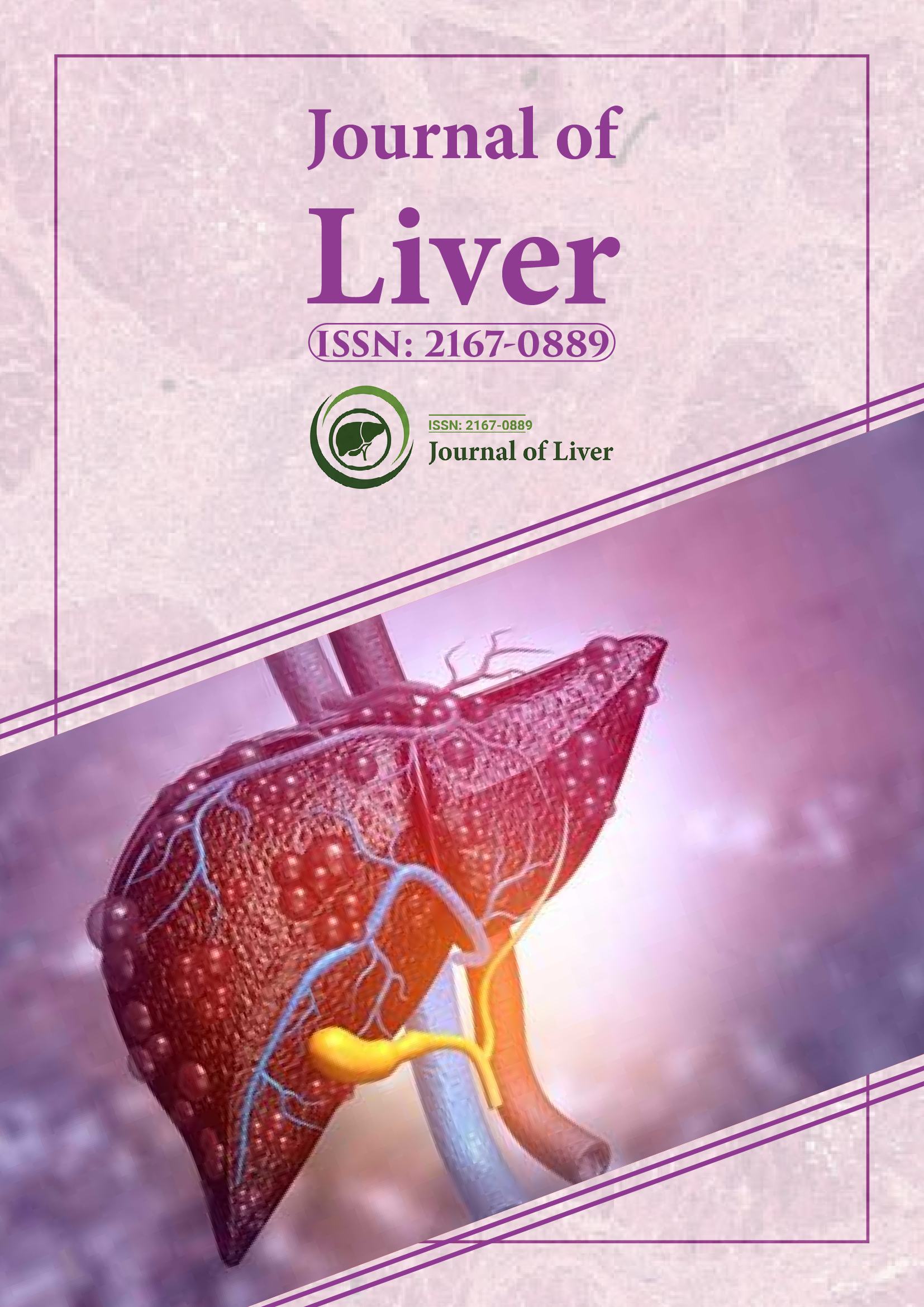Indexed In
- Open J Gate
- Genamics JournalSeek
- Academic Keys
- RefSeek
- Hamdard University
- EBSCO A-Z
- OCLC- WorldCat
- Publons
- Geneva Foundation for Medical Education and Research
- Google Scholar
Useful Links
Share This Page
Journal Flyer

Open Access Journals
- Agri and Aquaculture
- Biochemistry
- Bioinformatics & Systems Biology
- Business & Management
- Chemistry
- Clinical Sciences
- Engineering
- Food & Nutrition
- General Science
- Genetics & Molecular Biology
- Immunology & Microbiology
- Medical Sciences
- Neuroscience & Psychology
- Nursing & Health Care
- Pharmaceutical Sciences
Opinion - (2025) Volume 14, Issue 2
Role of hepatic immune mechanisms in regulating transplant outcomes
Jens Larsen*Received: 26-May-2025, Manuscript No. JLR-25-29528 ; Editor assigned: 28-May-2025, Pre QC No. JLR-25-29528 (PQ); Reviewed: 11-Jun-2025, QC No. JLR-25-29528 ; Revised: 18-Jun-2025, Manuscript No. JLR-25-29528 (R); Published: 25-Jun-2025, DOI: 10.35248/2167-0889.25.14.259
Description
Liver transplantation is a life-saving treatment for individuals with end-stage liver disease, yet its success depends largely on the balance between alloimmune responses and tolerance. Among the immune structures involved, Hepatic Draining Lymph Nodes (HDLNs) have emerged as critical components that regulate immune surveillance, antigen presentation and adaptive immunity. These nodes act as immunological hubs that influence whether the graft is targeted for rejection or accepted in a state of tolerance. A comprehensive understanding of their anatomy, immunological functions and interactions with the liver microenvironment and gut-derived antigens offers important insights into improving transplant outcomes [1].
Liver transplantation has become the definitive therapeutic option for patients suffering from irreversible acute and chronic liver diseases. Advances in surgical techniques and immunosuppressive therapies have significantly improved patient survival, yet the persistent challenges of graft rejection and long-term complications remain unsolved. The liver is unique among solid organs due to its dual blood supply, continuous exposure to gut-derived antigens and complex immune environment. These features endow it with immunological properties that set it apart from other transplanted organs, often contributing to higher levels of tolerance. Within this context, hepatic draining lymph nodes serve as central regulators of immune responses. They receive lymphatic drainage from the liver that contains antigens, cytokines and immune cells and function as sites of antigen presentation, immune priming and regulation of tolerance. By orchestrating the balance between effector and regulatory pathways, HDLNs are key determinants of whether the allograft is accepted or rejected [2].
Function of hepatic draining lymph nodes
Hepatic draining lymph nodes are located at the hepatic hilum, porta hepatis and surrounding perihepatic regions, including hilar, pericholedochal and gastrohepatic nodes. Lymphatic drainage from the liver parenchyma flows into these nodes, carrying a variety of immune mediators. Within the lymph nodes, antigen-presenting cells such as dendritic cells and macrophages present hepatic antigens to naïve T cells, initiating adaptive immune responses. In addition to antigen presentation, these lymph nodes serve as centers for T-cell modulation, where effector T cells, regulatory T cells and B cells interact to determine the direction of the immune response. Cytokine production within HDLNs further shapes the immune environment, either promoting activation and inflammation or suppressing responses in favor of tolerance. Through these functions, HDLNs form a critical interface between the liver graft and the recipient’s immune system [3].
Role in alloimmunity
Alloimmunity arises when the recipient’s immune system recognizes donor antigens as foreign. In liver transplantation, this process is largely mediated through the presentation of donor major histocompatibility complex molecules to recipient T cells. Hepatic draining lymph nodes play a central role in this recognition. Within the nodes, naïve T cells are primed by dendritic cells presenting donor antigens, leading to their differentiation into effector T cells. These effector T cells subsequently migrate to the graft where they initiate cytotoxic responses that damage hepatocytes and vascular endothelial cells. In parallel, B cells residing in HDLNs can be activated and differentiate into plasma cells, generating donor-specific antibodies that contribute to antibody-mediated rejection. Experimental studies demonstrate that disruption or depletion of these lymph nodes alters the course of rejection, confirming their importance in the alloimmune cascade. Clinical findings further support this, as activated T cells and donor-reactive B cells have been detected within HDLNs during episodes of acute and chronic rejection. These observations underline the active involvement of HDLNs in shaping rejection outcomes [4].
Interaction with the gut-liver axis
The liver’s exposure to the gut-liver axis further highlights the importance of HDLNs in transplant immunology. The portal vein delivers blood rich in microbial products, dietary antigens and metabolites from the intestine. These components are processed within hepatic draining lymph nodes, which must distinguish between harmful and harmless signals. When microbial translocation occurs, endotoxins activate dendritic cells in HDLNs and enhance T-cell priming, thereby intensifying alloimmune responses and risking rejection. Conversely, beneficial microbial-derived signals can promote regulatory pathways by supporting the expansion of regulatory T cells and increasing the production of anti-inflammatory cytokines. This dual influence suggests that HDLNs serve as a key checkpoint in balancing tolerance and rejection, with gut microbial composition playing a significant role. Therapeutic strategies such as probiotics, prebiotics, or selective microbial modulation are being explored as methods to indirectly shape immune outcomes through their effects on HDLNs [5].
Citation: Larsen J (2025). Role of Hepatic Immune Mechanisms in Regulating Transplant Outcomes. J Liver. 14:259.
Copyright: © 2025 Larsen J. This is an open-access article distributed under the terms of the Creative Commons Attribution License, which permits unrestricted use, distribution, and reproduction in any medium, provided the original author and source are credited.
